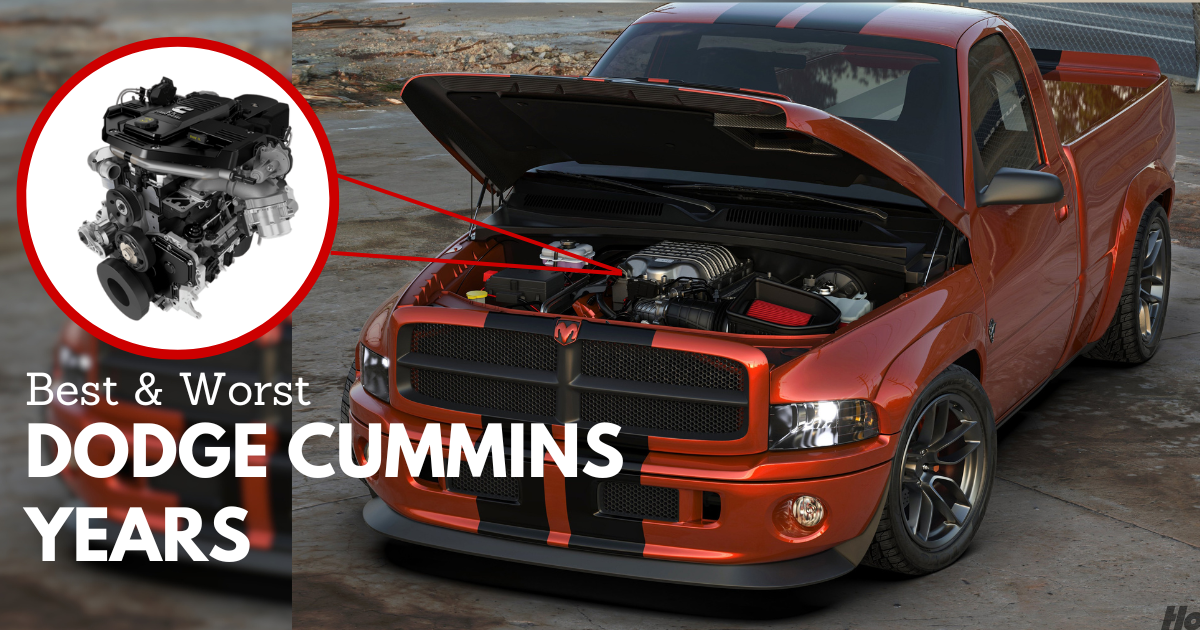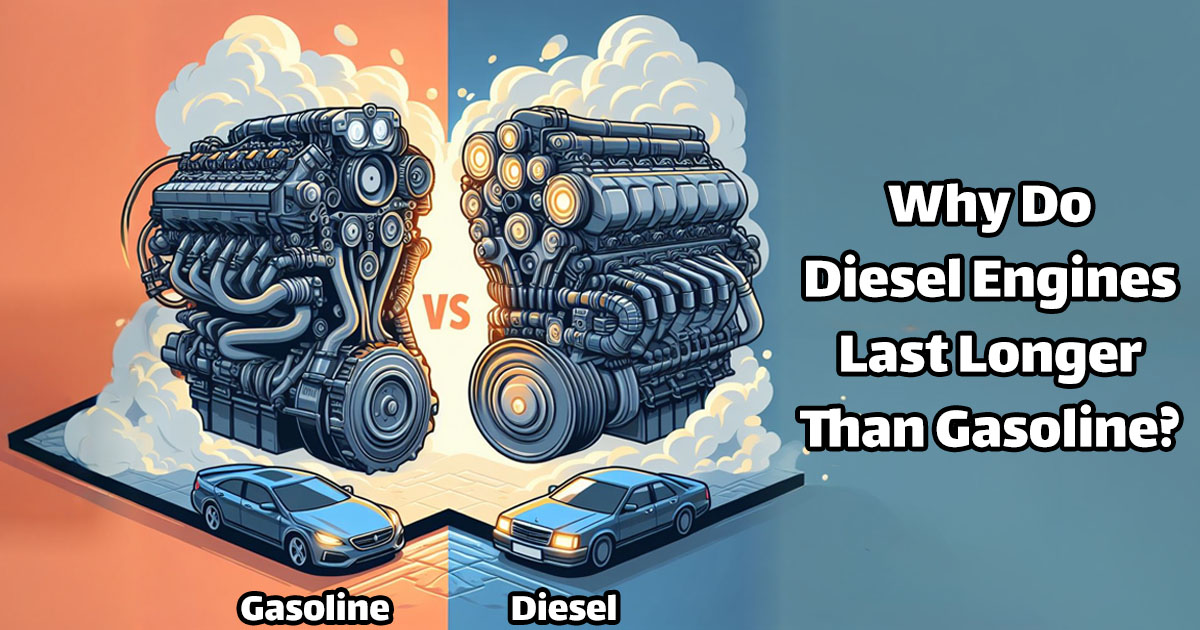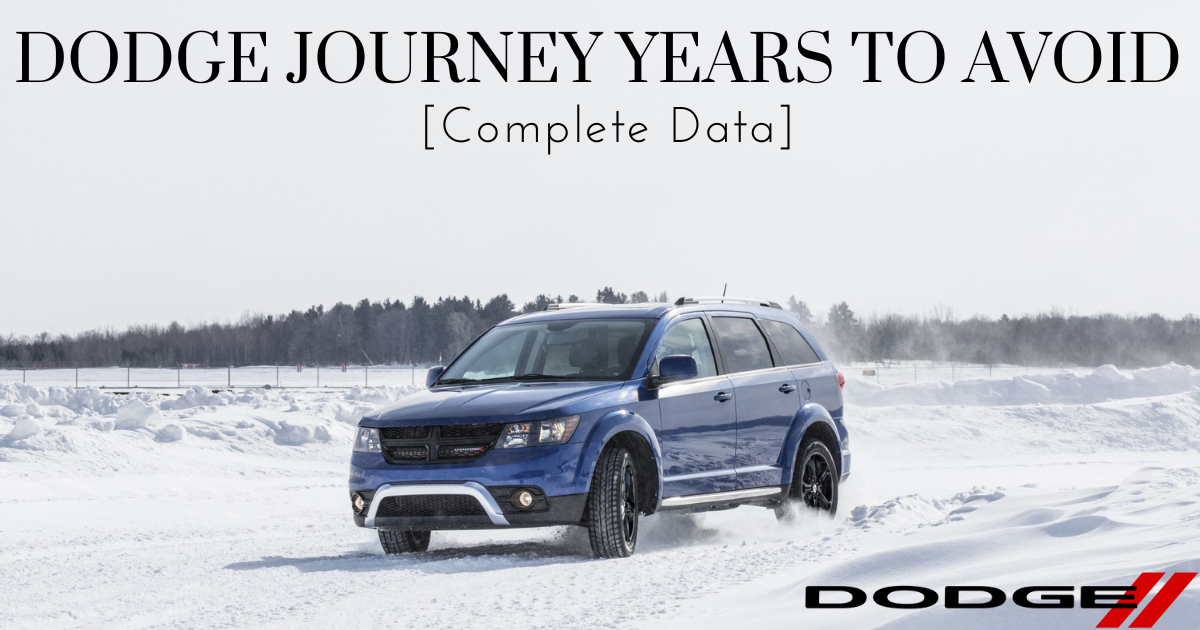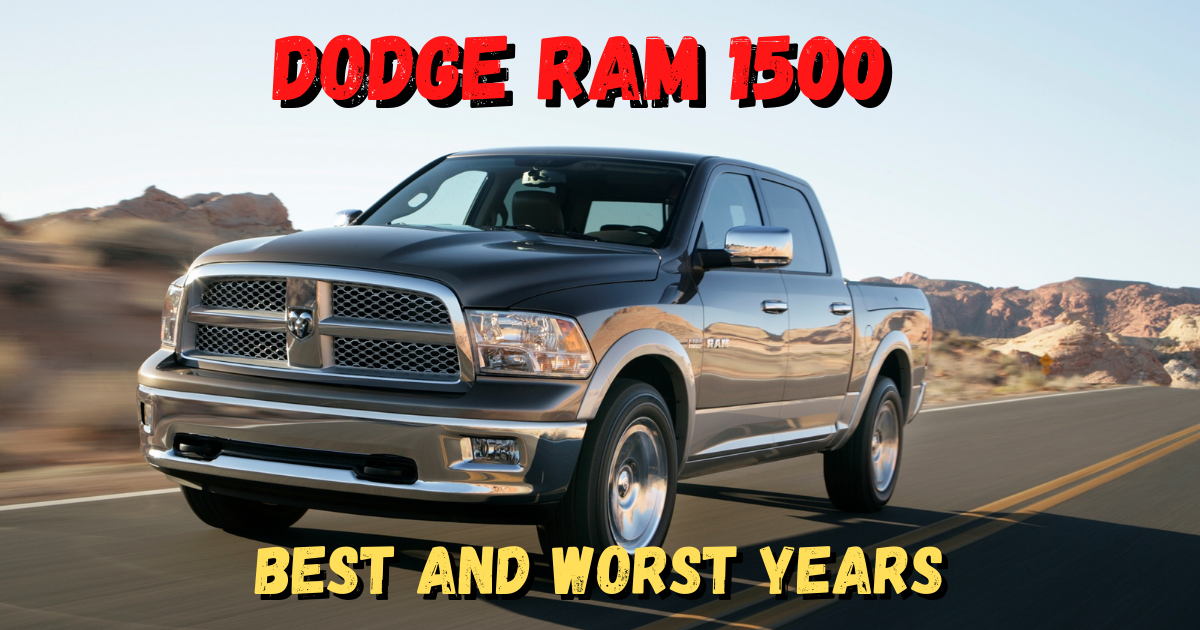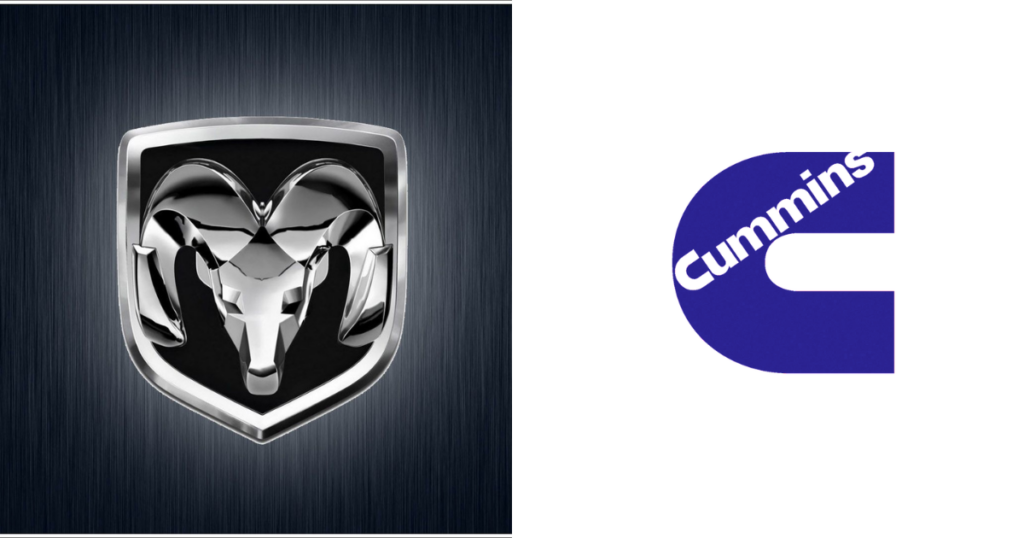
When it comes to diesel power, Dodge Rams can count on Cummins. The Dodge Ram has undergone numerous redesigns throughout the years, with most changes occurring within the engine. Aside from reviews and ratings, the customer’s taste is the most important factor in determining the best year. Consumers can select a truck that best suits their needs by browsing among models with varying degrees of engine performance.
Since its inception, the early second-generation Dodge Ram with the 5.9-liter, 12-valve Cummins diesel engine has been iconic. Because of the engine’s ability to make cheap horsepower and its super-durable construction, the 1994-1998 trucks will always be highly preferred.
The Cummins Engine in Retrospect

The American Clessie Cummins created this robust diesel engine. In 1918, he started at Hvid, a Dutch company specializing in diesel engines. In 1930, Cummins showcased a modified engine in a Packard Touring vehicle. Unprecedented, the revolutionary diesel achieved an average fuel economy of 26 miles per gallon.
However, the partnership between Cummins and Chrysler was the most significant development for the diesel engine manufacturer. In the 1980s, Chrysler was the only major American automaker still not offering diesel engines for their pickups. 1989 the problem was fixed when the Detroit-based firm introduced a Cummins B-Series engine option for its Dodge Ram pickup truck, which produced 160 horsepower. Since then, buyers of any Ram model can opt for a Cummins diesel motor.
Types of Engines
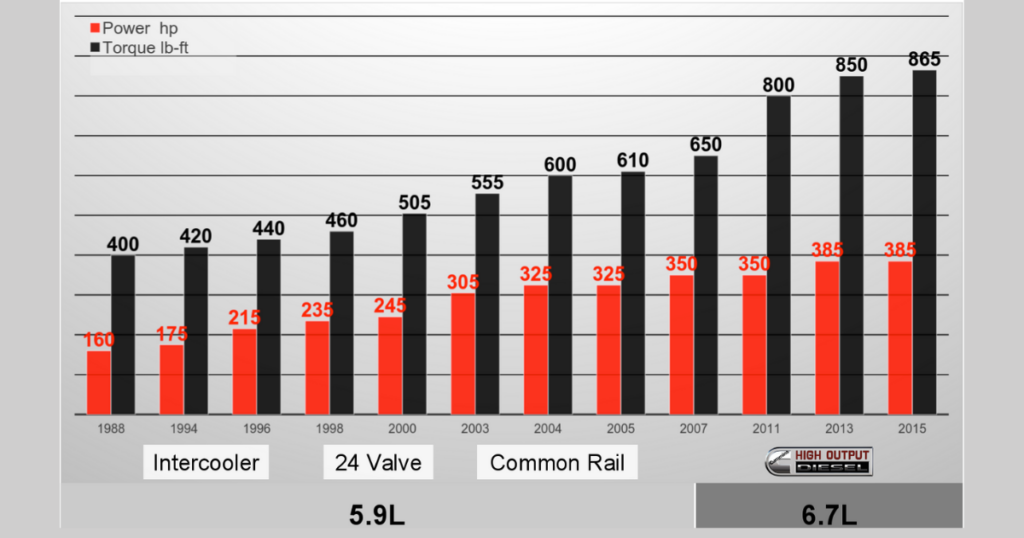
6.7 CUMMINS
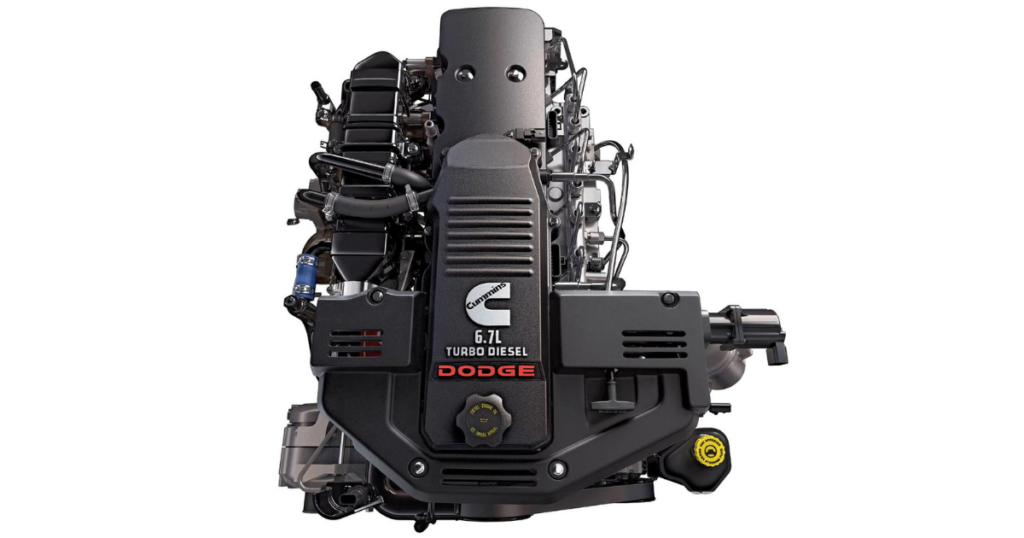
The 6.7-liter engine is one of the most recent additions to Cummins’ illustrious B Series of diesel motors. The 2007 Dodge Ram was the first vehicle to feature this engine. The straight-six turbodiesel has 24 valves and is regarded as one of the best diesel engines ever built.
The manufacturer has made many improvements to this engine throughout the years. The 6.7 Cummins engine produced a robust 400 horsepower and 1000 lb-ft of torque as of 2021. The Ram 2500 and 3500+ pickup trucks from Dodge currently feature this engine.
Although this engine is widely hailed as one of the most dependable, a number of problems have surfaced over the years. Turbocharger failure, diluted gasoline, a blocked diesel particulate filter, and blown head gaskets are typical concerns with this engine.
5.9 CUMMINS
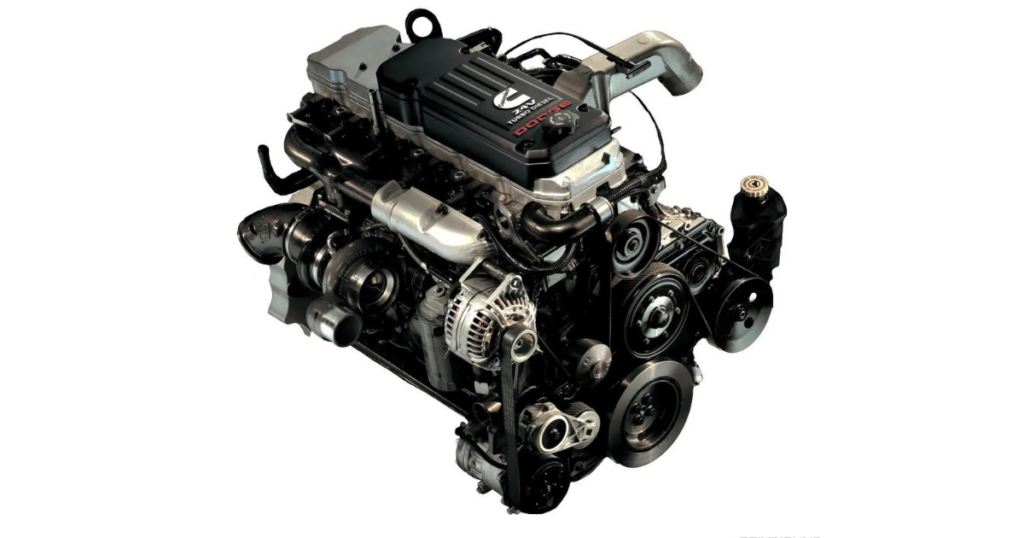
The 5.9-liter Cummins engine debuted in a Dodge pickup truck in 1989. It was initially developed for medium-duty commercial pickup vehicles. Since then, Dodge has made three distinct generations of this turbodiesel engine available.
The 5.9 Cummins, sometimes known as the “12v,” is prone to failures in the heater grid and the Throttle Position Sensor (TPS). The 5.9 Cummins is widely regarded as among the finest diesel engines ever produced. If cared for properly, one of these can easily endure over 500,000 miles.
Cummins Engines Of 1989-1993
The Cummins engine debuted in Dodge vehicles in 1989 and was so well received that many original engines are still used today. Although the 1989 engine came out before Ram released its 2500 and 3500 models, it had a significant impact because it was the first Cummins engine, which has become the industry standard.

First-generation Dodges (from 1989 to 1993) are extinct due to rust, transmission issues, and old age, although good examples can still be found. These pickups are the most basic option as they are based on the practically extinct ’72-’93 body type. However, they are straightforward to operate, trustworthy, and fuel-efficient.
- Price Range: $500 to $5,000
- Engine: 5.9L Cummins with Bosch VE injection pump
- Transmission(s): TF727 3-speed automatic (’89-‘93), Getrag 5-speed manual (’89-‘93), A518 4-speed automatic (’91.5-‘93)
- Best Year(s): 1991.5-1993 (due to the factory intercooler option and available A518 4-speed automatic)
- Pros:
- Simple
- Reliable
- Lightweight
- Smaller than a traditional V8 engine (easier to repair)
- Inline-6 engine design
- Direct fuel injection (first of its kind)
- Great fuel economy (20-25 mpg when driven conservatively)
- Large crankshaft
- Intercooler
- Turbocharger
- Cons:
- Prone to rust.
- Electrical problems surface with age.
- Gutless without turning up the VE injection pump.
- Interiors rattle apart.
Cummins Engines Of 1994-1998
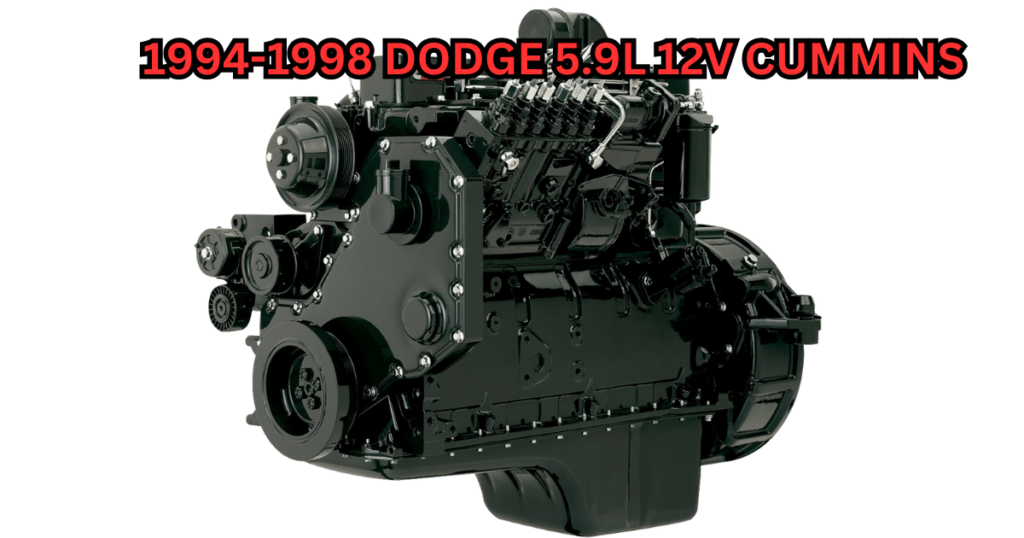
In 1994, this pickup helped restore Dodge’s reputation. The mechanical P7100-equipped 12-valve 5.9L Cummins is the absolute pinnacle of performance potential. They are inexpensive, easy to repair, and can endure half a million miles. Since vehicles of this body shape (and with this engine in particular) are in such high demand, these Rams will cost you quite a bit, even though they are around 20 years old.
- Price Range: $2,000 to $10,000.
- Engine: 5.9L Cummins with Bosch P7100 (P-pump) injection pump.
- Transmission(s): 47RH 4-speed automatic (’94-‘95), NV4500 5-speed manual (’94-‘98), 47RE 4-speed automatic (’96-‘98).
- Best Year(s): 1996-1998 with the NV4500 5-speed manual and 215hp P7100 injection pump (the most sought-after P-pump offered).
- Pros:
- Mechanical injection with a straightforward engine.
- Bosch P7100 injection pump.
- Cummins B series industrial brawn and rock-solid reliability.
- Great low-end grunt.
- Cons:
- Killer Dowel Pin (a mechanical fault that can cause the engine to die unexpectedly; the only major mechanical problem, but it is relatively easy to fix).
- Automatic transmissions fail prematurely with any added power.
- The interiors wear out.
- Rust issues (even on cleaner trucks, remember to check the bottoms of the doors).
- No 4-door models are offered.
- Quad cab models did not have opening rear doors until early ’98.
Cummins Engines Of Mid-1998 to 2002
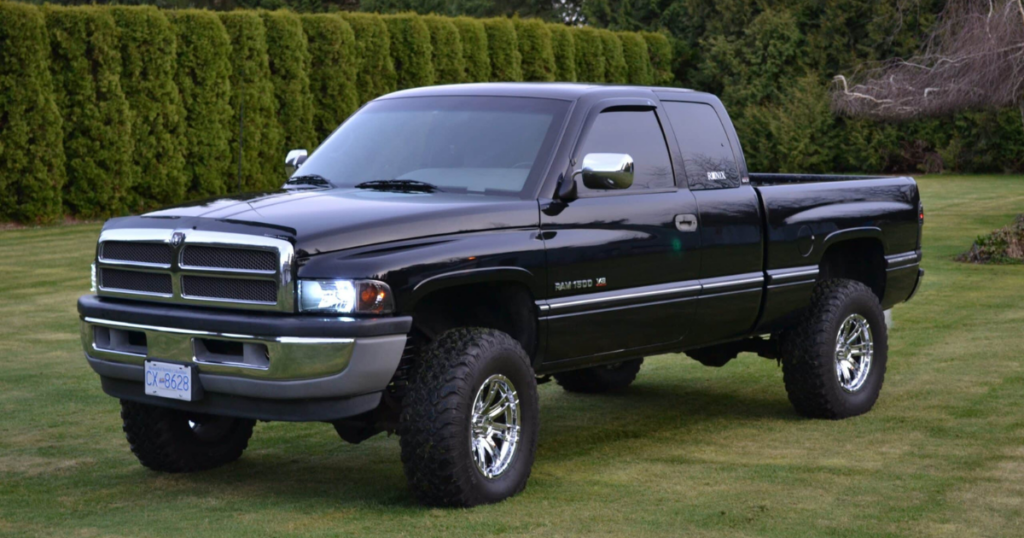
The later second-generation Rams improved upon the ’94-’98 models in several ways: the back doors opened on Quad Cab models, there were some minor cosmetic changes, and the ’94-’98 vehicles were equipped with a 20-valve 5.9L Cummins engine instead of a 24-valve one.
A critical point of failure, however, was the electronically regulated Bosch VP44 injection pump. A common cause of VP44 failure is a faulty factory-installed lift pump that prevents the engine from receiving fuel. Although there are certain drawbacks, the current generation of Ram trucks is reliable and can pull heavy loads while still returning impressive fuel economy.
- Price Range: $4,000 to $14,000
- Engine: 5.9L Cummins with Bosch VP44 injection pump.
- Transmission(s): 47RE 4-speed automatic (’98.5-‘02), NV4500 5-speed manual (’98.5-‘02), NV5600 6-speed manual (’01-’02 H.O. models).
- Best Year(s): Any model year with a manual transmission except those with a 53 block.
- Pros:
- Injector, turbo, and programmer upgrades can get these trucks into the 450-500hp range.
- Quad cabs do have opening rear doors.
- Extreme low-end torque, great for pulling trailers.
- High output ’01-’02 models got a 10hp, 45 lb-ft bump and came with a 6-speed manual.
- Cons:
- VP44 is known to die every 150,000 miles (usually from a failed lift pump).
- Plan to replace the VP44 pump shortly after purchasing a high-miler.
- Similar interior and rust issues as ’94-’98 trucks.
- Automatic transmission fails prematurely with added power.
- 53 blocks are known to crack.
Cummins Engines Of 2003-2007

These models made several improvements over their precursors. However, the common-rail system’s components are expensive to replace and usually don’t exceed the 200,000-mile mark. So, if you plan to buy a high-mile ’03-’07 truck, expect to replace the injectors and CP3 pump.
- Price Range: $11,000 to $25,000
- Engine: 5.9L Cummins with Bosch common-rail injection system.
- Transmission(s): 47RE 4-speed automatic (‘03), NV5600 6-speed manual (’03- ‘05), 48RE 4-speed automatic (’04- ‘07), G56 6-speed manual (’05.5- ‘07)
- Best Year(s): 2006-2007 (these are the most sought-after years, but they also have the best factory configuration options and aftermarket support)
- Pros:
- The common-rail injection system added horsepower and torque to the 5.9L Cummins, thus providing extra power but with quieter running.
- 450-500hp is possible.
- The trucks are roomier, with true Crew Cab configurations finally becoming available.
- Known to be very reliable, even at higher horsepower levels.
- Updated interiors, a more comfortable ride, and improved towing manners.
- The last Cummins offered emissions-control devices.
- Cons:
- Injection system components are expensive to replace.
- Stuck injectors or high-timing programmers can melt pistons in short order.
- Automatic transmissions are a major weak link with any significant amount of added power as they cannot handle it.
- G56 6-speed manual gearbox fails at higher horsepower/torque levels.
Cummins Engines Of Mid-2007 to 2016
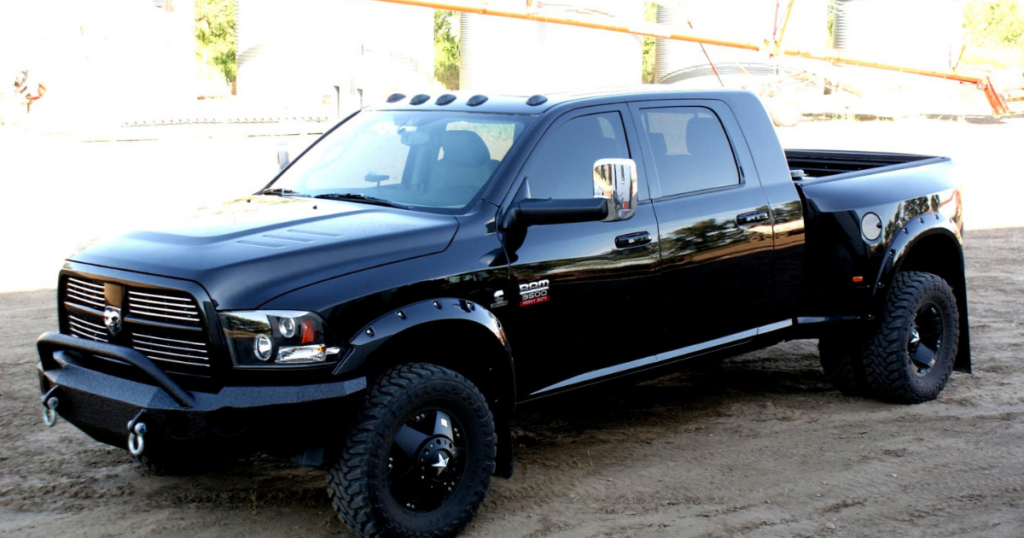
It’s not hard to see why newer Rams (model years ‘07.5 and after) are so widely used as everything from towing and hauling machines to daily drivers and family haulers. Under the hood is a bigger, 6.7L Cummins that, in factory condition, generates more horsepower and torque than the 5.9L.
The ‘07.5 model also introduced numerous emissions-control technologies (exhaust gas recirculation, diesel oxidation catalyst, and diesel particle filter). These can cause issues at higher miles.
- Price Range: $13,000 to $55,000
- Engine: 6.7L Cummins with Bosch common-rail injection system.
- Transmission(s): 68RFE 6-speed automatic (’07.5-‘16), G56 6-speed manual (’07.5-‘16), Aisin 6-speed automatic (’13-‘16).
- Best Year(s): 2011- newer due to improved ride quality (hydraulic body mounts).
- Pros:
- More engine displacement yields more horsepower and torque out of the box than the 5.9L.
- 68RFE 6-speed automatic transmission (a first for Ram trucks of this generation, bringing them into the twenty-first century).
- Variable geometry turbocharger and integrated brake controller have increased responsiveness and drivability.
- Towing manners are much improved over ’03-’07 models, due to the above, especially on ’11-newer trucks.
- Cons:
- Emissions equipment can fail prematurely and reduce fuel economy compared to the 5.9L predecessor.
- Head gaskets pop more frequently (due to higher cylinder pressure and more torque than the 5.9L).
- 68RFE 6-speed automatic will not handle much more than 450-rwhp.
Cummins Engines Of 2010-2018
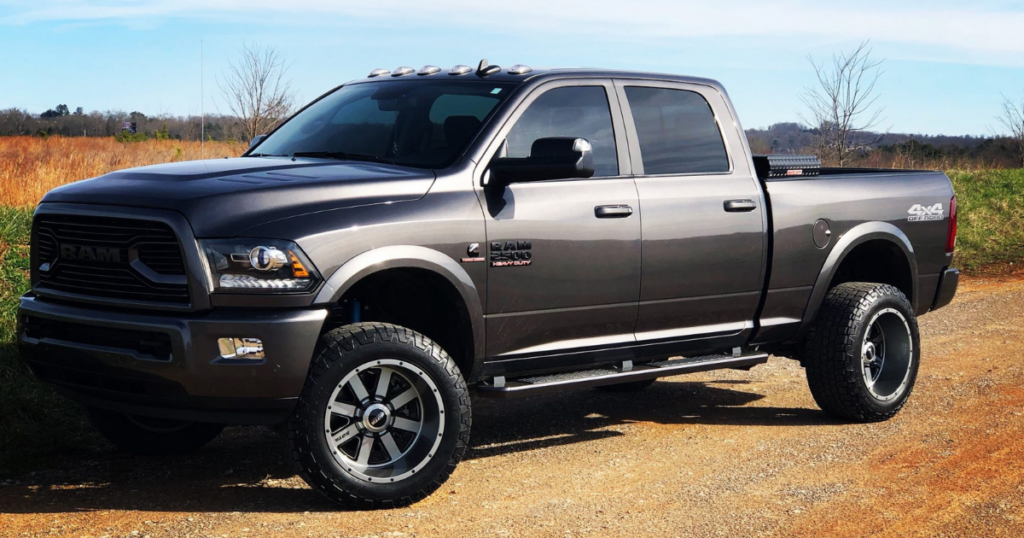
In 2010 the 4th Gen Cummins arrived on the market, and Dodge put the 6.7L engine in their Ram 2500 and 3500 lines. It added power and helped Ram comply with upcoming emissions standards. 2010 marked the beginning of the 4th generation Cummins which continued until 2018. From 2007 to 2018, the Cummins trucks improved by almost 200 lb/ft of torque and 35 horsepower.
- Engine: Inline 6 Cylinder.
- Transmission(s): 68RFE 6-Speed Automatic; G56 6-Speed Manual; Aisin 6-Speed Automatic (2013+).
- Pros:
- Quad cab trucks were replaced with full-size crew cabs.
- Numerous trims were added to the Ram truck lineup, giving a much-needed interior boost.
- Performance additions included a more reliable 68 RFE transmission and a new Aisin transmission.
- A diesel particulate filter (DPF) was added to Ram’s heavy-duty truck line-up.
- Cons: (generally, reported issues are very minor)
- If the CP4.2 fails, it tends to trash the downstream fuel system with metal pieces. This is rare, however.
- The milage achieved before severe maintenance is required varies on a case-by-case basis.
Years to Avoid
Avoid the following engines if you value reliability. Older Dodge Cummins models are more likely to have problems than newer ones. Therefore, newer models are preferable. Getting your hands on a lesser-quality Dodge Cummins model could be the easier choice, but in the long run, you’ll be better off waiting for a better one.
- 1991
- 1992
- 1993
- 1999
- 2001
- 2003
- 2006
- 2007
- 2008
- 2011
Common Problems Encountered
Problems common to the above models that make them so unreliable are:
- Transmission failure.
- Age and rust.
- Low horsepower compared to newer models.
- Unreliable fuel injectors.
- Easy cracking in the engine.
- Faulty connections with other components.
Repairing these faults is expensive. Not to mention once these problems arise, chances of recurrence are high and ultimately inevitable. The best way to avoid the hassle is to put your money towards a Ram powered by a Dodge Cummins that is reliable and ensures quality performance in the long run.
Conclusion
As powerful as the Cummins’ engines are, those from 1994 to 1998 rank high due to their performance and simplicity in long-term maintenance. Avoid the older generations in general due to their lack of sophistication and need for ongoing costly repairs. For the greatest results, spending your money on a car powered by the fourth and fifth Dodge Cummins generations is recommended.

